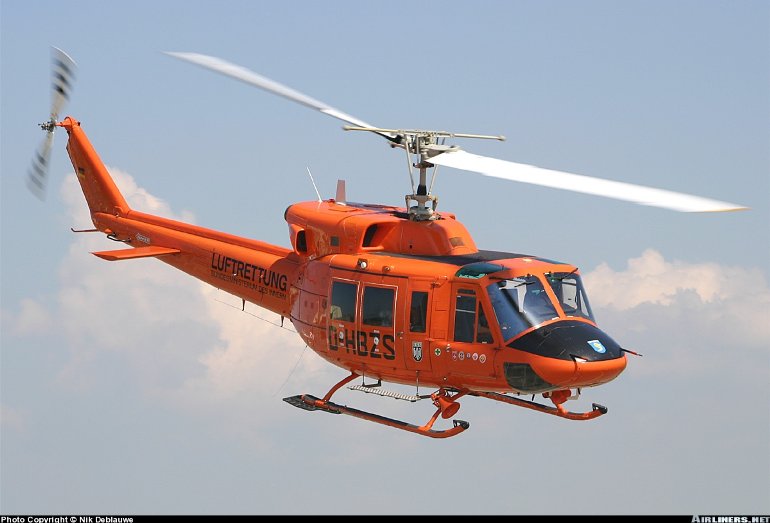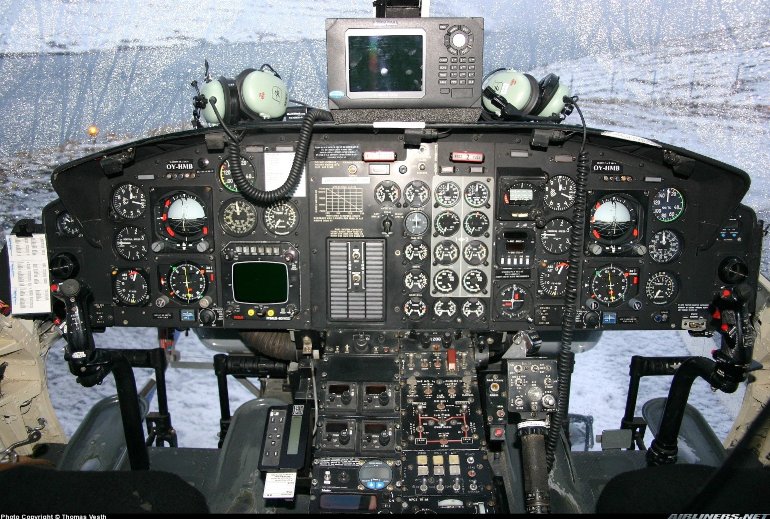Aircraft Technical Data
Bell 212 Twin TwoTwelve


| Details | |
| Country of Origin | United States of America and Canada |
| Type | Medium lift utility helicopter |
| History | The Model 212 is a twin engined development of Bell's earlier and highly successful Model 204 and 205 series. Bell announced its decision to develop the Model 212 in early May 1968 in large part in response to a Canadian Armed Forces requirement for a twin engined development of the CUH1H (Model 205) then entering military service in that country, and following successful negotiations with Pratt & Whitney Canada and the Canadian government. Development of the Model 212 was a joint venture between Bell, Pratt & Whitney Canada and the Canadian government, the latter providing financial support. The resulting helicopter (designated CUH1N in Canadian and UH1N in US military service) first flew in 1969 and was granted commercial certification in October 1970. The first Canadian CUH1Ns were handed over in May 1971. The most significant feature of the Twin TwoTwelve is the PT6T Twin-Pac engine installation. This consists of two PT6 turboshafts mounted side by side and driving a single output shaft via a combining gearbox. The most obvious benefit of the new arrangement is better performance due to the unit's increased power output. However, the Twin-Pac engine system has a major advantage in that should one engine fail, sensors in the gearbox instruct the remaining operating engine to develop full power, thus providing a true engine out capability, even at max takeoff weight. Aside from the twin engines, the 212 features only minor detail changes over the earlier Model 205 and UH1H, including a slightly reprofiled nose. The 212 is also offered with a choice of IFR or VFR avionics suites. Production was transferred to Bell's Canadian factory in August 1988. |
| Powerplants | One 1340kW (1800shp) (derated to 960kW/1290shp) Pratt & Whitney Canada PT6T3 or PT6T3B Turbo TwinPac, comprising two coupled PT6 turboshafts sharing a common gearbox with a single output shaft, driving a two blade main rotor and two blade tail rotor. |
| Performance | Max speed 240km/h (130kt), long range cruising speed 193km/h (104kt). Initial rate of climb 1320ft/min. Range with standard fuel at long range cruising speed 450km (243nm). |
| Weights | Empty VFR configuration 2765kg (6097lb), IFR configuration 2847kg (6277lb); max takeoff (with or without an external load) 5080kg (11,200lb). |
| Dimensions | Main rotor diameter 14.69m (48ft 2in), length overall 17.46m (57ft 3in), fuselage length 12.92m (42ft 5in), height 4.53m (14ft 10in). Main rotor disc area 168.1m2 (1809.6 sq ft). |
| Capacity | Total seating for 15, including one or two pilots. Max weight on an external sling load 2270kg (5000lb). |
| Production | Approximately 900 212s, including military aircraft, had been delivered by 1998. Production totals augmented by AgustaBell examples, although these are mainly military versions. Bell production transferred to Canada in 1988. |
| Related Links | Bell 212 Twin TwoTwelve |
The backbone of this section is from the The International Directory of Civil Aircraft by Gerard Frawley and used with permission. To get your own copy of the book click here. |
|








